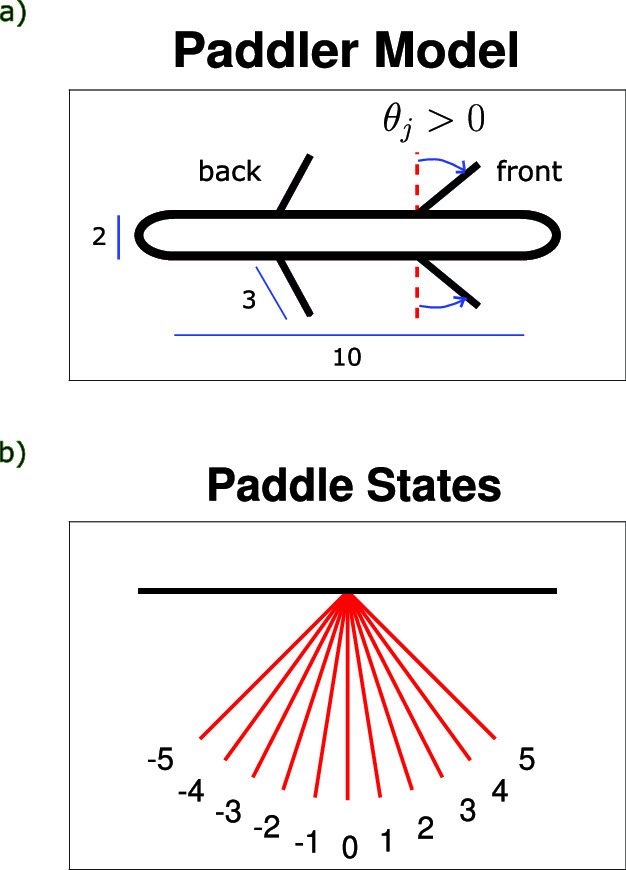https://doi.org/10.1140/epje/s10189-025-00511-5
Regular Article - Living Systems
Optimizing metachronal paddling with reinforcement learning at low Reynolds number
Department of Mathematics, University of California Davis, One Shields Ave, 95616, Davis, CA, USA
Received:
12
April
2025
Accepted:
16
July
2025
Published online:
8
August
2025
Metachronal paddling is a swimming strategy in which an organism oscillates sets of adjacent limbs with a constant phase lag, propagating a metachronal wave through its limbs and propelling it forward. This limb coordination strategy is utilized by swimmers across a wide range of Reynolds numbers, which suggests that this metachronal rhythm was selected for its optimality of swimming performance. In this study, we apply reinforcement learning to a swimmer at zero Reynolds number and investigate whether the learning algorithm selects this metachronal rhythm, or if other coordination patterns emerge. We design the swimmer agent with an elongated body and pairs of straight, inflexible paddles placed along the body for various fixed paddle spacings. Based on paddle spacing, the swimmer agent learns qualitatively different coordination patterns. At tight spacings, a back-to-front metachronal wave-like stroke emerges which resembles the commonly observed biological rhythm, but at wide spacings, different limb coordinations are selected. Across all resulting strokes, the fastest stroke is dependent on the number of paddles; however, the most efficient stroke is a back-to-front wave-like stroke regardless of the number of paddles.
Guest Editors: Frank Cichos, On Shun Pak, Holger Stark, Lailai Zhu.
Supplementary Information The online version contains supplementary material available at https://doi.org/10.1140/epje/s10189-025-00511-5.
© The Author(s) 2025
 Open Access This article is licensed under a Creative Commons Attribution 4.0 International License, which permits use, sharing, adaptation, distribution and reproduction in any medium or format, as long as you give appropriate credit to the original author(s) and the source, provide a link to the Creative Commons licence, and indicate if changes were made. The images or other third party material in this article are included in the article’s Creative Commons licence, unless indicated otherwise in a credit line to the material. If material is not included in the article’s Creative Commons licence and your intended use is not permitted by statutory regulation or exceeds the permitted use, you will need to obtain permission directly from the copyright holder. To view a copy of this licence, visit http://creativecommons.org/licenses/by/4.0/.
Open Access This article is licensed under a Creative Commons Attribution 4.0 International License, which permits use, sharing, adaptation, distribution and reproduction in any medium or format, as long as you give appropriate credit to the original author(s) and the source, provide a link to the Creative Commons licence, and indicate if changes were made. The images or other third party material in this article are included in the article’s Creative Commons licence, unless indicated otherwise in a credit line to the material. If material is not included in the article’s Creative Commons licence and your intended use is not permitted by statutory regulation or exceeds the permitted use, you will need to obtain permission directly from the copyright holder. To view a copy of this licence, visit http://creativecommons.org/licenses/by/4.0/.





